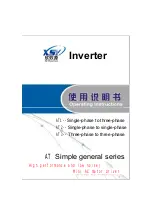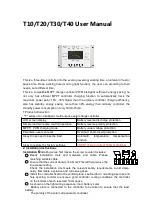
CG635 Remote Programming
30
CG635 Synthesized Clock Generator
Command Syntax
Communications with the CG635 is done with ASCII characters. All commands are
4-characters long and are case-insensitive. Standard IEEE-488.2 defined commands
begin with the ‘*’ character followed by three letters. CG635 specific commands are
composed of four letters.
The four-letter mnemonic (shown in CAPS) in each command sequence specifies the
command. The rest of the sequence consists of parameters.
Commands may take either
set
or
query
form, depending on whether the ‘?’ character
follows the mnemonic.
Set only
commands are listed without the ‘?’,
query only
commands show the ‘?’ after the mnemonic, and
optionally query
commands are marked
with a ‘(?)’.
Parameters shown in { } and [ ] are not always required. Parameters in { } are required to
set a value, and are omitted for queries. Parameters in [ ] are optional in both set and
query commands. Parameters listed without any surrounding characters are
always required.
Do NOT send () or {} or [] or spaces as part of the command.
The command buffer is limited to 255 bytes, with 25 byte buffers allocated to each of up
to three parameters per command. If the command buffer overflows, both the input and
output buffers will be flushed and reset. If a parameter buffer overflows, a command
error will be generated and the offending command discarded.
Commands are terminated by either a semicolon, a <CR> (ASCII 13), or a <LF> (ASCII
10). If the communications interface is GPIB, then the terminating character may
optionally be accompanied by an EOI signal. If the EOI accompanies a character other
than a <LF>, a <LF> will be appended to the command to terminate it. Execution of the
command does not begin until a command terminator is received.
Aside from communication errors, commands may fail due to either syntax or execution
errors. Syntax errors can be detected by looking at bit 5 (CME) of the event status
register (*ESR?). Execution errors can be detected by looking at bit 4 (EXE) of the event
status register. In both cases, an error code, indicating the specific cause of the error, is
appended to the error queue. The error queue may be queried with the LERR? command.
Descriptions of all error codes can be found in the Error Codes section starting on
page 43.
















































